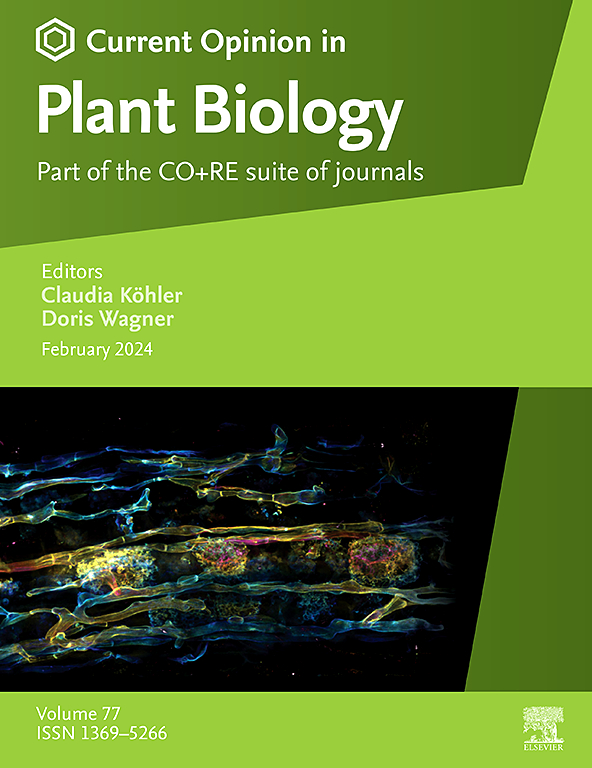形成硫代葡萄糖苷创新的系统发育和基因组机制
IF 7.5
2区 生物学
Q1 PLANT SCIENCES
引用次数: 0
摘要
植物创造了大量的专门代谢物,以优化在复杂环境中的适应性。每个植物谱系都创造了新的代谢物,通常使用经典的复制/新功能化模型,但这受到采样不足的属和缺乏高质量基因组的限制。系统发育上解决的基因组,更深入的化学采样和芥子油苷多样性的机制评估,开始填补对化学新颖性如何产生的更深层次的理解。这表明,像串联或远端事件这样的小规模重复可能对代谢新颖性的形成有更大的影响。同样,这表明基因丢失在整个属的代谢多样性中起着重要作用。最后,机制研究表明硫代葡萄糖苷途径不是一个确定的终点,而是被用作其他代谢物产生的跳板。总之,这项工作显示了将高质量基因组与平衡的系统发育采样相结合的潜力,以开发关于特化代谢物基因进化如何发生的改进模型。本文章由计算机程序翻译,如有差异,请以英文原文为准。
Phylogenetic and genomic mechanisms shaping glucosinolate innovation
Plants have created an immense diversity of specialized metabolites to optimize fitness within a complex environment. Each plant lineage has created novel metabolites often using the classical duplication/neo-functionalization model, but this is constrained by undersampled genera and an absence of high-quality genomes. Phylogenetically resolved genomes, deeper chemical sampling and mechanistic assessment of glucosinolate diversity in the Brassicales is beginning to fill in a deeper understanding of how chemical novelty arises. This is showing that small-scale duplications like tandem or distal events may have more influence on the formation of metabolic novelty. Similarly, this is showing that gene loss is playing a significant role in metabolic diversity across the entire genera. Finally, mechanistic work is showing that the glucosinolate pathway is not a defined endpoint but is being used as a launching pad for the creation of other metabolites. In combination, this work is showing the potential in combining high-quality genomes with balanced phylogenetic sampling to develop improved models on how specialized metabolite gene evolution occurs.
求助全文
通过发布文献求助,成功后即可免费获取论文全文。
去求助
来源期刊

Current opinion in plant biology
生物-植物科学
CiteScore
16.30
自引率
3.20%
发文量
131
审稿时长
6-12 weeks
期刊介绍:
Current Opinion in Plant Biology builds on Elsevier's reputation for excellence in scientific publishing and long-standing commitment to communicating high quality reproducible research. It is part of the Current Opinion and Research (CO+RE) suite of journals. All CO+RE journals leverage the Current Opinion legacy - of editorial excellence, high-impact, and global reach - to ensure they are a widely read resource that is integral to scientists' workflow.
 求助内容:
求助内容: 应助结果提醒方式:
应助结果提醒方式:


